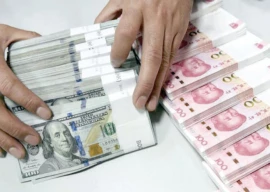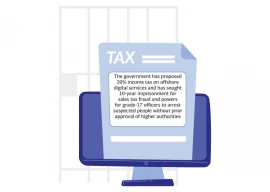1726301245-0/Untitled-design-(9)1726301245-0.png)
The Sindh government has raised concerns over removing the Mohenjo-Daro image from Pakistani currency notes.
Sindh's Minister for Culture and Tourism, Syed Zulfiqar Ali Shah, has sent a letter to the Governor of the State Bank of Pakistan (SBP) in response.
The letter expressed reservations about the decision to replace the historic site’s image with the Khyber Pass on the 20-rupee note.
According to the letter, Mohenjo-Daro, which first appeared on the 10-rupee note in the 1970s and later on the 20-rupee note, has now been replaced without consultation.
Shah highlighted that Mohenjo-Daro is a historic site and a UNESCO World Heritage Site representing a 5,000-year-old civilization.
"Mohenjo-Daro is a symbol of pride for Sindh and Pakistan," the letter stated, emphasizing its significance as one of the oldest urban settlements in the world.
The Sindh Department of Culture urged the SBP to reconsider the decision, warning that ignoring such a vital part of the country’s heritage would be a mistake.
The letter called for proper recognition of Mohenjo-Daro’s global importance and historical legacy.
On September 7, the SBP announced the winners of a competition to design new currency notes, which sparked an online debate.
One of the winning designs, particularly the Rs 5,000 note, has been criticised by some social media users for depicting the internationally recognised disputed territory of the Jammu and Kashmir region.
While some users saw no issue with the depiction of the disputed region, also noting that the art competition held no official value, others saw it as an attempt to 'normalise Kashmir's exclusion.'
The online criticism came despite the SBP's earlier announcement that shortlisted designs from local artists go on to be shared with international designers who will collaborate with the SBP to finalise the new currency series.
According to the SBP, the international designers will take inspiration from the local submissions but use their expertise and imagination to craft the final banknote designs.
Plastic banknote
In August, the governor of the State Bank of Pakistan (SBP), Jameel Ahmad, announced that all currency notes would be replaced by the end of this year.
The statement was made during a briefing at the Senate’s Standing Committee on Finance, chaired by Senator Saleem Mandviwalla.
Ahmad revealed that the state bank is preparing to introduce new polymer paper notes, which is expected to be completed by year-end.
"We are ready to bring in polymer currency notes," he said. "In the first phase, one denomination will be introduced, which will be presented to the cabinet for approval."
Addressing concerns about counterfeit notes, the governor noted that advanced security features would be included in the new notes to curb counterfeiting. He added that the bank is still assessing the durability, cost, and long-term viability of these polymer notes.
Committee member Mohsin Aziz raised concerns about the Rs5,000 note, suggesting it contributes to corruption and should be discontinued. However, Ahmad clarified that there is no proposal under consideration to phase out the Rs5,000 note.
"Suggestions to discontinue it have been made before, but they were not accepted," he said. The Rs5,000 denomination will be part of the new currency design.
Ahmad also emphasised that law enforcement agencies are responsible for preventing the misuse of currency notes.
1737547089-0/fizza-(82)1737547089-0-405x300.webp)
1723201420-0/BeFunky-collage-(43)1723201420-0-165x106.webp)

1737546499-0/fizza-(81)1737546499-0-165x106.webp)




1737530468-0/sidra--(12)1737530468-0-270x192.webp)



1725702764-0/Express-Tribune-Web-(2)1725702764-0-270x192.webp)



1737452260-0/Gaddafi-stadium-(2)1737452260-0-270x192.webp)









COMMENTS
Comments are moderated and generally will be posted if they are on-topic and not abusive.
For more information, please see our Comments FAQ